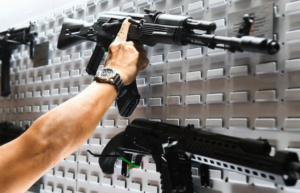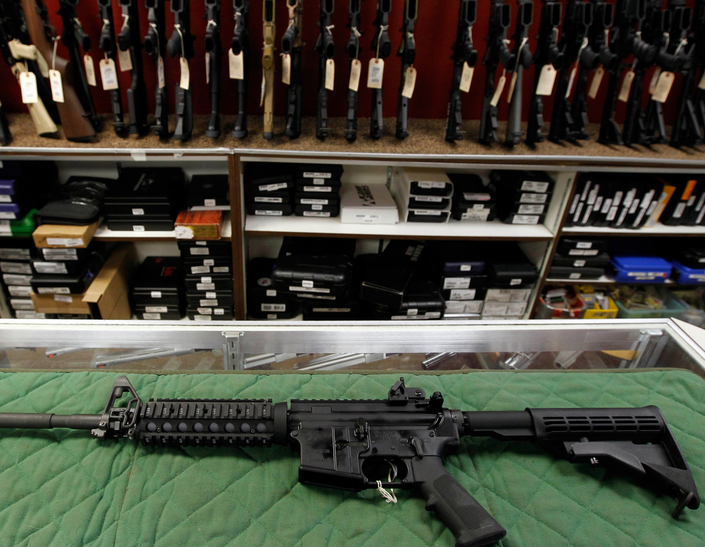Gun show security ensures a safe environment, employing access control, surveillance systems, trained personnel, and emergency response plans effectively. Gun shows serve as crucial marketplaces for firearms enthusiasts, collectors, and vendors to buy, sell, and trade firearms and related accessories. While these events play a significant role in the firearms industry, ensuring gun show security is paramount to prevent unauthorized access, reduce the risk of theft, and promote public safety. In this comprehensive guide, we’ll explore the importance of gun-show security measures and discuss strategies, technologies, and best practices to enhance safety and security at these events.

The Importance of Gun Show Security
Gun shows attract thousands of attendees and feature a wide variety of firearms, ammunition, and accessories. While the majority of participants are law-abiding citizens, the nature of these events presents unique security challenges. Without adequate security measures in place, gun shows can be vulnerable to theft, illegal trafficking, and potential threats to public safety. By prioritizing gun show security, event organizers, vendors, and attendees can create a safe and secure environment for all participants.
Key Components of Gun Show Security
Effective gun show security requires a multi-faceted approach incorporating various strategies, technologies, and best practices. Some key components of gun show security include:
Access Control
Implementing access control measures, such as bag checks, metal detectors, and ID verification, to prevent unauthorized entry and ensure that only registered attendees and vendors can access the event.
Physical Security Personnel
Employing trained security personnel, including armed guards and uniformed officers, to patrol the premises, monitor crowd behaviour, and respond to security incidents promptly.
Surveillance Systems
Installing surveillance cameras and monitoring stations throughout the venue to deter criminal activity, record footage of suspicious behaviour, and provide evidence in case of security breaches or incidents.
Firearm Checkpoints
Establishing designated firearm check-in/check-out areas staffed by trained personnel to ensure that all firearms brought into the event are safely secured and comply with local laws and regulations.
Emergency Response Plans
Developing comprehensive emergency response plans and conducting regular drills and exercises to prepare for potential security threats, medical emergencies, or other critical incidents.
Communication Systems
Implementing effective communication systems, such as two-way radios or mobile applications, to facilitate real-time communication between security personnel, event organizers, and law enforcement agencies.
Vendor Screening
Conducting background checks and vetting procedures for vendors and exhibitors to verify their credentials, ensure compliance with legal requirements, and mitigate the risk of unauthorized sales or transactions.
Public Awareness Campaigns
Educating attendees about the importance of gun show security, promoting responsible firearm ownership and storage practices, and encouraging reporting of suspicious behaviour or concerns to event staff or security personnel.
Best Practices for Gun Show Security
In addition to implementing security measures and leveraging technology, adhering to best practices can further enhance gun show security and promote a safe and secure environment for all participants. Some best practices for gun show security include:
Collaboration and Coordination
Foster collaboration and coordination among event organizers, venue management, law enforcement agencies, and security providers to ensure a unified and coordinated approach to security planning and implementation.
Continuous Monitoring and Evaluation
Regularly monitor and evaluate the effectiveness of security measures, identify potential vulnerabilities or gaps, and make adjustments or improvements as needed to address evolving threats and risks.
Training and Education
Provide comprehensive training and education programs for security personnel, event staff, vendors, and attendees to raise awareness about security protocols, emergency procedures, and threat mitigation strategies.
Community Engagement
Engage with the local community, neighbourhood associations, and relevant stakeholders to build trust, gather intelligence, and foster a cooperative relationship that enhances security and promotes a positive event experience.
Crisis Communication Planning
Develop clear and concise communication strategies and protocols for disseminating information, issuing alerts, and providing updates to event participants, media outlets, and the public during security incidents or emergencies.
Conclusion
Gun show security is a complex and multifaceted issue that requires careful planning, coordination, and implementation of various strategies, technologies, and best practices. By prioritizing security, leveraging technological innovations, and adhering to best practices, event organizers, vendors, and attendees can create a safe and secure environment that promotes responsible firearm ownership, protects public safety, and preserves the integrity of the firearms industry. Together, we can work towards enhancing gun show security and ensuring that these events remain valuable and enjoyable experiences for all participants.
